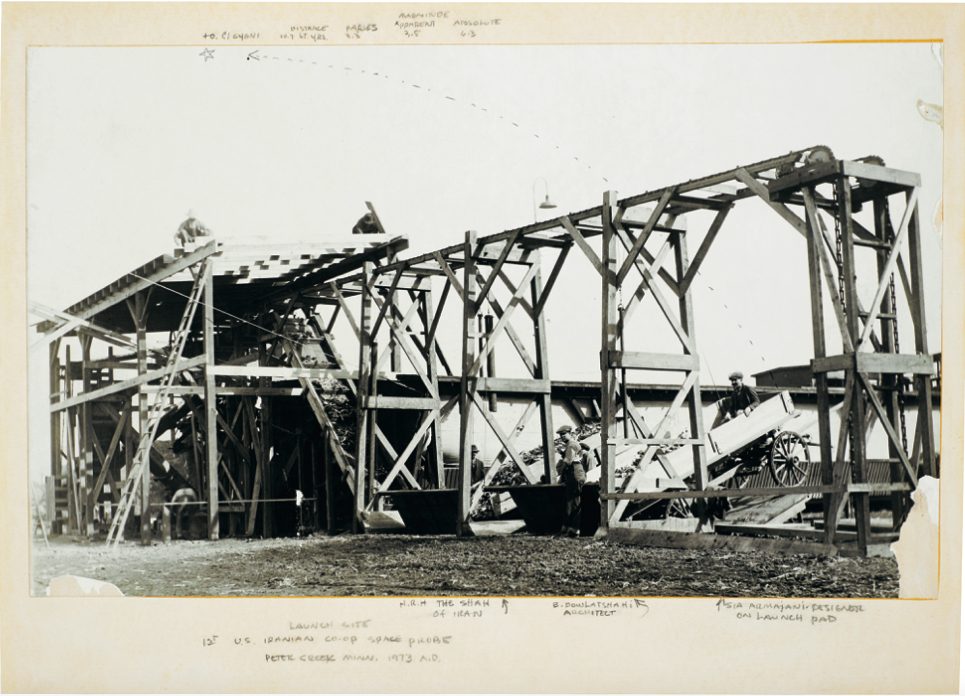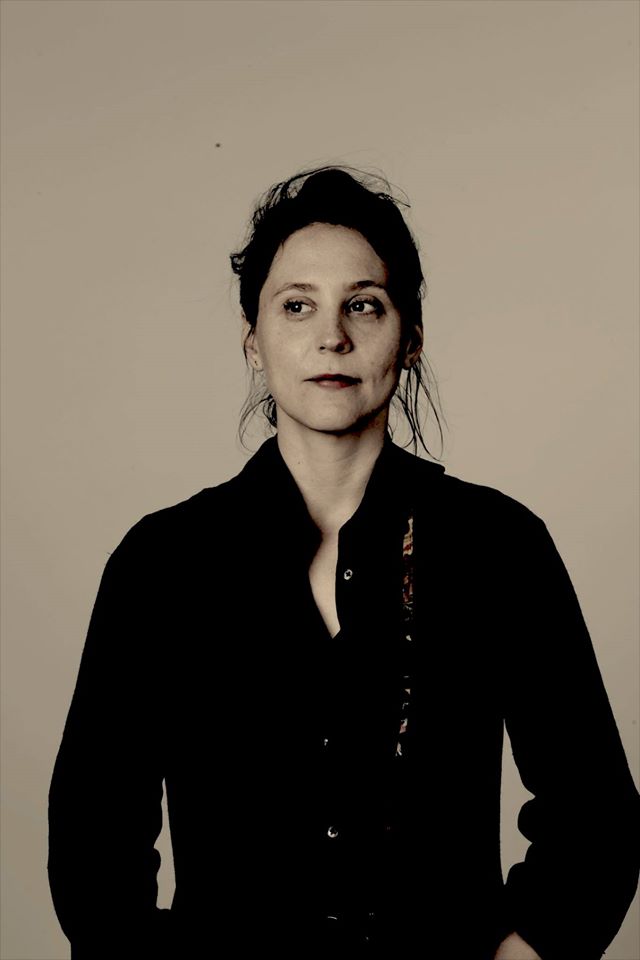Some Thoughts for Siah: An Obituary for Siah Armajani
Siavash (Siah) Armajani (1939–2020), a conceptual artist best known for his civic-minded public sculptures commissioned for sites across Europe and the U.S., passed away on Thursday, August 27, 2020 from complications related to heart disease. Armajani was born to a wealthy merchant family in Tehran. He was active in political opposition circles throughout high school and college, and was forced to leave Iran in 1960 while still a student at the University of Tehran. He subsequently emigrated to the U.S. and enrolled at Macalester College in St. Paul where he continued his studies in Continental philosophy and American literature. In 1962, the Walker Art Center in Minneapolis acquired one of two works by Armajani included in the museum’s Biennial of Painting and Sculpture, marking the beginning of a long-lasting relationship between the artist and that institution.
The artist has been the subject of more than fifty solo exhibitions since 1978 and his works can be found in major museum collections around the world. While extremely reticent, he enjoyed close working relationships with other artists, architects, and curators, for example, designing the World Financial Center Plaza at Battery Park City alongside architect César Pelli and artist Scott Burton in the mid-1980s. A significant number of his works reside in the collection of Musée d’art moderne et contemporain (MAMCO), Geneva, due to Armajani’s close friendship with former museum director Christian Bernard. His first U.S. retrospective opened at the Walker Art Center in September 2018 before traveling to the Met Breuer in February 2019. He is survived by his beloved wife of many years, Barbara Bauer Armajani.
Siah was incredibly private, and the longer I knew him the more I had the impression that he wanted his work to exist on its own, without a name attached, or as something anonymous in the world. This was why he generally hated having his photo taken and why he refused even to have his name appear anywhere on the cover of the catalog that was published in conjunction with his 2018–19 retrospective at the Walker Art Center and the Met; the spine was a compromise. He would probably shake his head if he knew I was writing a reflection on his life and the presence behind his works.
Perhaps unsurprisingly, the first work that Siah created—titled Paria #1 (1957)—is composed of two pages from a printed poem in Farsi by Iranian poet Ahmed Shamlu (1925–2000), which he glued to a cardboard backing. Siah had traced over the text in what could be understood as both an homage or a study (e.g., a means of copying and therefore memorizing the poem), while also effacing the words beneath his pen. The effect was a palimpsest of two voices that resolved into an image of disappearance. This gesture of a trace that produces an erasure became a leitmotif across his decades-long practice. The latter was born as an artistic and conceptual choice, one informed by his readings of European and American philosophy and literature at the University of Tehran. It was also an acknowledgment of the context in which Siah produced his earliest works between 1957 and 1960. A series of collages from this period are replete with references to surreptitiously circulated publications produced by political opposition movements of the period, including the National Front, within which he was active. They also incorporate elements borrowed from local religious talismans within which texts and prayers were sealed or otherwise obscured. Even the collaged nature of the works and their magpie borrowings from poetry, folk songs, prayers, and children’s rhymes testified to a vision of Iran that contradicted the official, top-down, and holistic identity promoted by the Shah’s regime.
Siah’s early interest in the work of art as a kind of script and as a performative gesture that drew on “non-artistic” genres of communication allowed him to connect seamlessly with the works of John Cage and the conceptual art movement that he encountered upon emigrating to the U.S. in 1960. However, in his new home, it was the American space-age embrace of science and technology that Siah seized on, intersecting briefly with New York and Minneapolis chapters of E.A.T. (Experiments in Art and Technology) founded in 1967, and producing a body of computer-generated sculpture and film, examples of which were included in the landmark exhibitions Art By Telephone at MoCA Chicago (1969) and Information at MoMA (1970). Yet it was also around this time that Siah began focusing primarily on architecture as a medium and a muse. He was especially interested in the 19th and early 20th century farm and factory structures that had informed modernist architecture, as well as early American building methods that allowed people to raise large structures without input from trained engineers and architects.
When I first visited Siah’s studio in Minneapolis in 2016, its shelves were filled with small cardboard maquettes of domestic interiors or architectural details: components of his vast work titled Dictionary for Building. Produced over the course of 1974 and 1975, this piece was originally consisted of almost a thousand individual maquettes, each created out of cardboard and often incorporating plastic dollhouse furniture or building supplies for architectural models. By the time of Siah’s retrospective, some 150 examples remained extant. Seeing them casually arranged next to one another on the shelves of his studio, they appeared at first fragile and unassuming. They quickly grew bigger and bigger as I studied them. On display at the Met Breuer years later, they created a magical and eerie topography, devoid of figures but replete with the gestures and choreography of everyday life. In a 2019 piece for Artforum, the artist Nicole Eisenmann referred to Dictionary for Building as “the smallest oubliette modernism could produce.”
From this most discreet of master works, Siah developed a visual and formal vocabulary that would inform most of the 70-odd life-size works commissioned for public spaces in Europe and the United States. A visit to Thomas Jefferson’s estate at Monticello in 1976 helped fuel Siah’s growing engagement with the idea of public art, and his works inspired by the site speak to his interest in the latent violence of an architecture so deeply embedded in the history of American democracy, while also located on a plantation worked by enslaved people. His public works could be singular structures or installations composed of multiple sculptural elements. The best known of former include Bridge Over Tree (1970), which was restaged by the Public Art Fund in Brooklyn Bridge Park in 2019, the Irene Hixon Whitney Bridge in Minneapolis (1988), as well as his various carceral gazebos named for prominent anarchists and his “unhomely,” or uncanny houses that resisted entry. Examples of the latter include his reading rooms inspired in part by Russian Constructivist designs for workers’ clubs and Gustav Klutsis’ designs for “street furniture,” as well as related autonomous works of large-scale sculpture such as his Dictionary for Building series from the 1980s and his Elements series from the 1980s and 1990s. His “Manifesto: Public Sculpture in the Context of American Democracy” (compiled 1968–78; revised 1993) offers a summation of many of the principles that guided his approach to art’s relationship to civic engagement.
Each time I came to visit him in Minneapolis, I spent hours talking to Siah in his studio. He would rarely answer questions directly about his work. Instead, he would tell you a story that seemed to have nothing to do with the question; half an hour later you’d realize he was giving you all the keys to the answer without touching directly on the work itself. He also clearly enjoyed telling certain stories: for example, of his ancestor Mirza Kuchuk Khan who lead a famous uprising in the forests of Gilan and established the short-lived Persian Socialist Soviet Republic (1920–21). Siah’s grandmother was his cousin and smuggled him and his troops food and supplies. The same grandmother, Siah told me, came to live with his family when he was still a boy. She would wake up at 6am every morning, down a shot of vodka and go for her daily constitutional in the pool. She is one of the figures that Siah consistently credited with instilling in him his political convictions, and it is her kitchen curtains that serve as the grounds for a number of his early script/calligraphic and collage works, which referenced, in turn, the tradition of “reciting from a curtain” (parda-khevani). This practice, familiar in 19th and early 20th century Iran involved the use of an illustrated painting as a prop for the public recitation, or narration of important religious events such as the Battle of Karbala (680 CE) or tales from the 10th–11th century epic of the Shahnameh. It was by way of reference to these sources that I came to understand the relationship between language and form in Siah’s works, which did not serve as supports for texts but as props for recitation and performance. From his interest in the civil documents such as marriage licenses produced by the Tudeh, or Communist Party, and stripped of the conventional references to divine and state authority, I came to understand the way in which his works similarly signaled their reliance on the authority of a public: not defined, but addressed.
In the quietness and reserve of so much of Siah’s practice, there also lay an insistence on looking directly at the most uncomfortable and painful parts of life. At the same time, Siah had an amazingly bone-dry sense of humor; you had to pay close attention to hear it. His works could make you feel uncomfortable or disoriented, and demanded an acknowledgment of this sense of being out of place. Siah himself was warm, human, and generous. I don’t think these apparent contradictions were unrelated. In retrospect, I believe his kindness and curiosity were fundamentally connected to his understanding of politics and his artistic practice, as much as his refusal to look away from everyday cruelty.
In the 1970s, Siah received the gift of a 19th century photograph of a bridge under construction. He annotated the photo with the caption: “The first U.S.-Iranian cooperative space probe.” In the lower righthand corner, he drew an arrow to a figure in a pitched wagon, with the note: “Sia Armajani, designer, on launch pad.”






